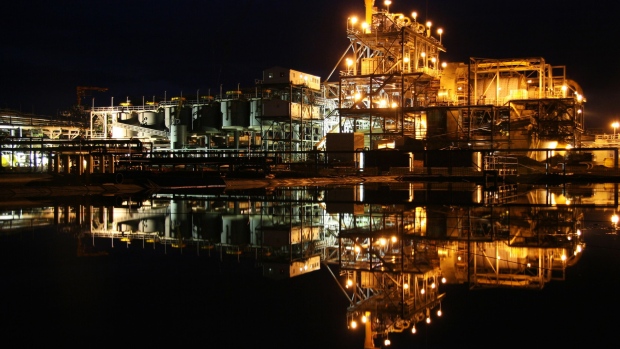Oct 4, 2023
Barrick Earmarks $2 Billion for Copper ‘Super Pit’ in Zambia
, Bloomberg News

(Bloomberg) -- Barrick Gold Corp. said it will spend nearly $2 billion to turn its Lumwana mine in Zambia into a “super pit” that transforms the once-unprofitable copper project.
The Lumwana Super Pit expansion aims to double last year’s annual copper production, reaching roughly 240,000 metric tons of copper annually over a 36-year life of the mine, the Canadian company said Wednesday in a statement. Barrick said it plans to finish a feasibility study by the end of next year, bringing expanded processing plant production forward to 2028.
The project is a key part of ambitions by the world’s second-largest gold producer to boost its status as a copper producer as global demand for the wiring metal is poised to surge. Barrick has said it wants copper to account for 30% of overall profit by the end of the decade, largely from Lumwana and its $7 billion Reko Diq project in Pakistan.
Barrick shares fell as much as 2.1% on the Toronto Stock Exchange Wednesday, lagging the 1.2% decline of Bloomberg Intelligence’s senior gold miners index.
Read More: World’s No. 2 Gold Miner Is Trying to Get Bigger in Copper
The expansion is expected to help Zambian President Hakainde Hichilema reverse the nation’s falling copper output. The Democratic Republic of Congo overtook Zambia as Africa’s biggest producer of the metal in 2013, and as of last year Zambia’s output was less than one-third of its now bigger rival.
Constant changes to Zambia’s tax code and a hostile business environment from its previous government have spooked investors and slowed investment. Hichilema’s pro-business policies are changing that: First Quantum Minerals Ltd. announced last year a $1.25 billion plan to boost output at its Kansanshi copper mine in the country. China Nonferrous Metal Mining Group last week pledged more than $1 billion in new investments tied to copper mining, according to the country’s public broadcaster.
Lumwana has come a long way since Barrick acquired the open pit operation in 2011. The Toronto-based company took a $3 billion writedown on the asset in 2013 after struggling with operational challenges, tax changes and power shortages in the southern African nation. Chief Executive Officer Mark Bristow replaced management at the mine after he became head of Barrick in January 2019.
--With assistance from Taonga Mitimingi.
(Adds shares in fourth paragraph.)
©2023 Bloomberg L.P.






